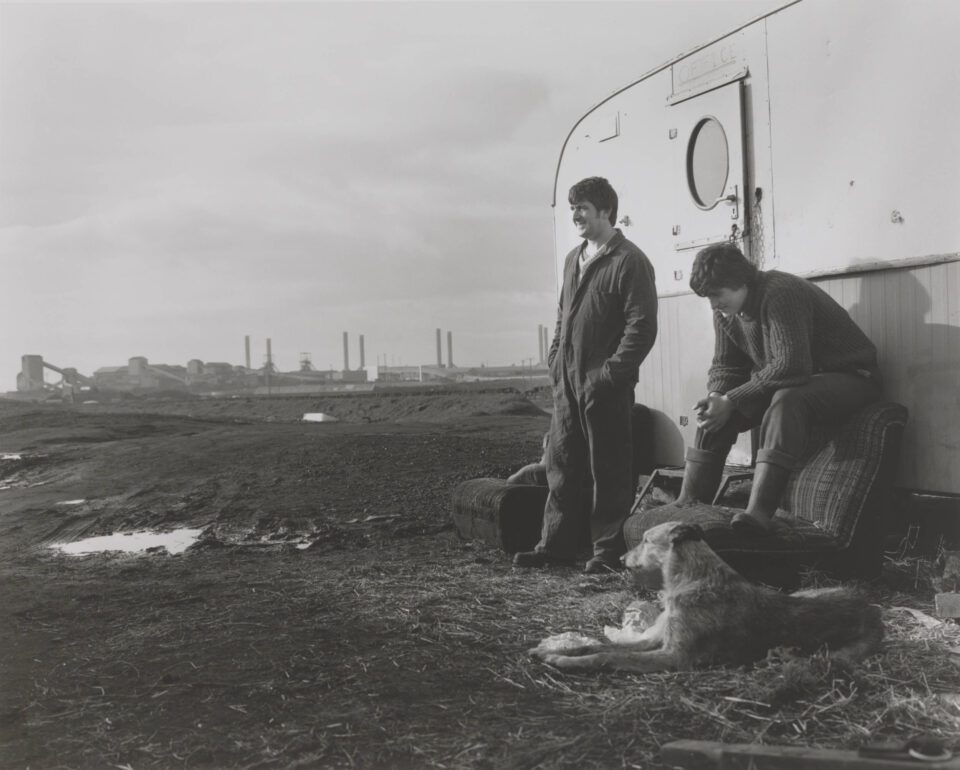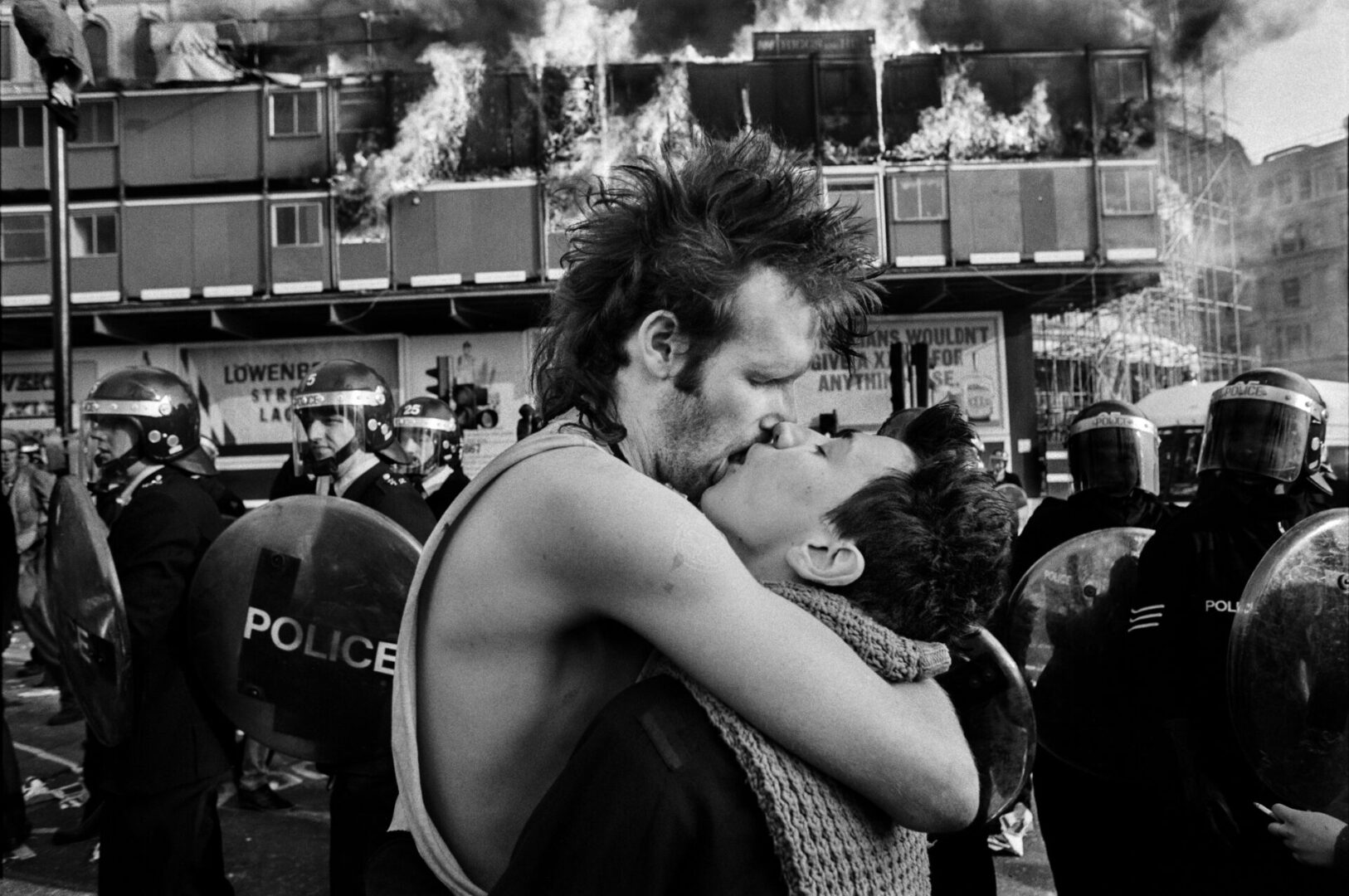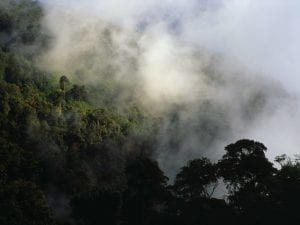The 1980s was a pivotal decade for photography. The 80s: Photographing Britain brings together nearly 350 images and archive materials from the period. The exhibition explores how photographers used the camera to respond to seismic social, political and economic shifts. The election of Margaret Thatcher as Prime Minister in 1979 ushered in an era that saw the miners strikes, the AIDS epidemic and technological advancement which paved the way for the digital age.
The show, the UK’s largest survey dedicated to looking at the development of photography, considers how the medium became a tool for social representation and artistic expression. The 1980s was a significant and highly creative period for photography. There are over 70 lens-based artists and collectives featured, spotlighting a generation who engaged with new ideas of photographic practice, from well-known names to those whose work is only now being recognised, including Maud Sulter, Mumtaz Karimjee and Mitra Tabrizian. Sulter is known for capturing the lives of Black people in Europe, Karimjee documented the daily life of women in China and the Bangladeshi communities of Whitechapel and Tabrizian’s films consider themes of urbanity, political events and class-divisions. Each artist worked prolifically during the 1980s, but have only recently gained the traction they rightly deserve.

The 80s introduces Thatcher’s Britain through documentary photography illustrating some of the tumultuous political events of the decade. History is brought to life with powerful images of the miners’ strikes by John Harris and Brenda Prince; anti-racism demonstrations by Syd Shelton and Paul Trevor; images of Greenham Common by Format Photographers and projects responding to the conflict in Northern Ireland by Paul Seawright and Willie Doherty. Seawright said of his iconic image depicting a whitewashed union jack mural in Belfast: “I wanted to capture the idea of division, the way two completely conflicting accounts of our history – from the Troubles to where we are now – can exist side by side.”
John Davies’ post-industrial landscapes and Tish Murtha’s portraits of youth unemployment in Newcastle are key pieces. The 2023 film Tish by Paul Sng tells her life story, bringing her work to contemporary audiences. She was recording the effects of the decline of traditional industries such as coal mining, shipbuilding and steel manufacturing, which had historically been major sources of employment in the region. At its peak in 1986, unemployment in the North East reached around 19.5% significantly higher than the national average of 11.9% during that time.

Anna Fox’s images of corporate excess, Paul Graham’s observations of social security offices and Martin Parr’s absurdist depictions of Middle England, are displayed alongside Markéta Luskačová and Don McCullin’s portraits of London’s disappearing East End and Chris Killip’s transient “sea-coalers” in Northumberland. They tell the story of a decade with two sides, one of economic boom, the other of dire poverty. In the seminal photobook In Flagrante (1988) Killip said: “I wanted to record people’s lives because I valued them. I wanted them to be remembered. If you take a photograph of someone they are immortalised, they’re there forever. For me that was important, that you’re acknowledging people’s lives, and also contextualising people’s lives.” The publication documented the real lives of communities reeling from the effects of deindustrialisation.
The exhibition explores important developments from technical advancements in colour photography to the impact of cultural theory by scholars like Stuart Hall and Victor Burgin. Influential publications like Ten.8 and Camerawork offered a platform for new debates about photography to emerge. Back in 2001, Stuart Hall said in Different: A Historical Context for Contemporary Photography: “Photography is not a neutral or transparent means of representation. It always carries the weight of interpretation and cultural meaning.” Hall saw photography as a medium that constructs, rather than merely reflects, reality, emphasising its role in shaping social and cultural narratives.

Photography is a compelling tool for representation and creators like Roy Mehta, Zak Ové and Vanley Burke, portray their multicultural communities, offering a voice to the people around them. Mehta documented the streets, homes, pubs and bars of Brent in northwest London. In 1991, when Mehta was mid-way through his five-year project, 45% of the area’s population identified as minority ethnic. He said: “People ask me how I was able to walk into all these different communities, but I never thought about it like that. To me it was all one community.”
Lens-based artists like Roshini Kempadoo, Sutapa Biswas and Al-An deSouza experimented with images to think about diasporic identities, and the likes of Joy Gregory and Maxine Walker who employ self-portraiture to celebrate ideas of Black beauty and femininity. The work of these artists broke new ground, paving the way for practitioners like Maryam Wahid, Mahtab Hussain and Adama Jalloh, who are making mainstream work that is accessing the masses. Wahid’s work explores her heritage and culture through household and family experiences, whilst Hussain challenges dominant concepts of multiculturalism. Jalloh’s documentary and portrait photography often focuses on the Black communities in London, showcasing the diversity and vibrancy of the city’s cultural landscape. In their work, it is easy to see the traces of the pioneering artists who came before them.

Against the backdrop of Section 28, a law that prevented the teaching of homosexuality in school, and the AIDS epidemic, photographers also employed the camera to assert the presence and visibility of the LGBTQ+ community. Tessa Boffin subversively reimagines literary characters as lesbians, whilst Sunil Gupta’s Pretended’ Family Relationships (1988), juxtaposes portraits of queer couples with the legislative wording of Section 28. For some, their work reclaimed sex-positivity during a period of fear. The exhibition spotlights photographers Ajamu X, Lyle Ashton Harris and Rotimi Fani-Kayode who each centre Black queer experiences and contest stereotypes through powerful nude studies and intimate portraits. Fani-Kayode said: “I make my photos homosexual on purpose.” The images were an active defiance of the prejudices and discriminations of the time.
The exhibition closes with a series of works that celebrate countercultural movements throughout the 1980s, such as Ingrid Pollard and Franklyn Rodgers’s energetic documentation of underground performances and club culture. The show spotlights the emergence of i-D magazine and its impact on a new generation of photographers like Wolfgang Tillmans and Jason Evans. These artists pioneered a cutting-edge style of fashion photography inspired by an alternative and exciting wave of youth culture, reflective of a new vision of Britain at the dawn of the 1990s.
The 80s: Photographing Britain is a behemoth. The decade was a transformative period for photography in Britain, capturing a nation undergoing profound social, political and economic upheavals. The exhibition presents nearly 350 images and archival materials that reflect this dynamic era. It’s nearly 40 years since 1985 and the world and how we take pictures has changed considerably. This blockbuster show is a must-attend this winter.
The 80s: Photographing Britain is at Tate Britain until 5 May 2025: Tate.org
Words: Emma Jacob
Image Credits:
David Hoffman, Nidge & Laurence Kissing, 1990 © David Hoffman.
Chris Killip,’Critch’ and Sean,1982. Tate © Chris Killip.
Paul Trevor, Outside police station, Bethnal Green Road, London E2, 17 July 1978. Sit down protest against police racism,1978 © Paul Trevor.
Syd Shelton, Darcus Howe addressing the anti-racist demonstrators, Lewisham, 13 August 1977. Dated 1977, printed 2020. Tate: Presented by the artist 2021 © Syd Shelton.
Zak Ové, Underground Classic (John Taylor), 1986. © Zak Ové.





